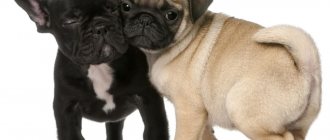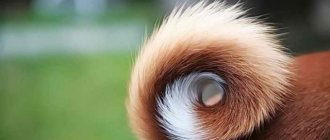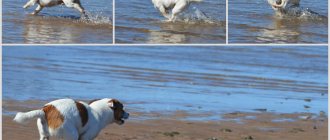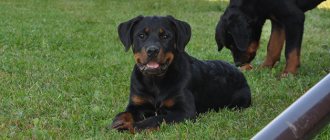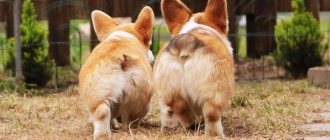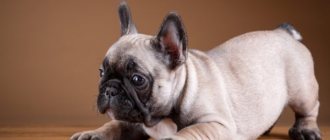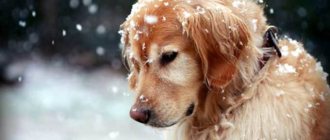The French bulldog breed standard has undergone serious changes over time, and to our time we have reached perfectly built and harmonious individuals.
The French Bulldog is an exceptional friend and is extremely popular all over the world. The bulldog has an unusual appearance and a wonderful character. People who have once adopted a Frenchie remain loyal only to this dog.
Story
The first fan club was founded in Paris in 1880. The dogs were mainly owned by ordinary people, which led to outbred crossbreeding. The old type was not attractive in appearance; the bulldogs were large with large heads and crooked paws.
Once in the hands of real breeders, in a short time the dogs, through correctly selected individuals for crossing, achieved good results.
The ancestors of the bulldog are the Malossas; large, massive dogs are also the ancestors of the shepherd dogs. The most dangerous and largest bulldog was bred for bull baiting. The British loved large and dangerous representatives, vaguely similar to those we know.
The French advocated miniaturization. The British, who considered small size a defect, exported them and sold them in France. For a long time, the best dog handlers worked on the Frenchman, achieved superiority and in 1989 were recognized in their homeland as a mature breed.
The first exhibition took place in 1903. Only in 2012 they became recognized by the International Canine Federation. How many years of work went into this!
Before final recognition, the standard was changed 3 times, adopted on April 28, 1995. Now the breed is at the peak of popularity, but despite this, work to improve the breed’s exterior does not stand still.
Show-class dogs are flying around the country at an enviable speed, matings are only pre-tested, improvements in appearance, and especially health, do not stop for a minute.
Main settings
Head and muzzle
Skull - can clarify a lot about heredity.
There are 3 forms:
- Heavy – powerful, large with defined muscles.
- Square - massive, but not huge; wide, similar to a square.
- Narrow – light head, muscles are not expressed.
The standard of the French bulldog is a square head, with pronounced folds and wrinkles, a wide skull - flat in the place where the ears are located, a roundish forehead - similar to a dome.
The occipital protuberance is almost invisible, the eyebrows are separated by a pronounced furrow. Upturned nose with symmetrical nostrils. Thick lips, drooping jowls that completely cover the teeth.
The undershot should not be pronounced, with the lower teeth on top of the upper teeth. Round, dark eyes, tinted eyelids. The ears are parallel to each other, wide, roundish - they definitely stand up.
Frame
The chest is barrel-shaped, well developed, the front part is convex. Rounded croup with a slight slope, wide sacrum. Not sagging back, short, wide neck. Folds and excess fat are not allowed on it, muscles are developed.
The front legs are not curved, strong. Strong elbows, pressed. The hind legs are well formed, forming an angle, the thighs are well muscled. The tail is above the line of the back when in motion.
Sometimes, an anomaly in the development of the vertebrae occurs - the presence of wedge-shaped vertebrae, most often in the thoracic region - which causes a serious illness, paralysis is possible - due to impaired functioning of the spinal cord.
Often babies are born with a longer tail than specified in the standard; in this case, the breeder docks the babies’ tails at 3-5 days from birth. Basically, they are born with short tails, this is genetically determined. Cryptorchid is not allowed among male dogs, the testicles must be lowered into the scrotum.
Types of forms
Many bulldogs have naturally docked tails, meaning dogs are born with a small tail. But in a litter there may be puppies with long tails, and with tails of an unusually short, curved shape.
With age, a dog's tail practically does not change. If it is not docked, it will remain the same as at birth.
To understand which tail needs adjustment and which does not, just read the breed standards.
The main requirement: the tail must be set low. If it is above the line of the back, too short or too deep, then this is considered a serious fault.
And its complete absence, shortened to one vertebra, depressed tail will lead to disqualification.
Forms that can be found in newborn bulldogs:
- Straight tail. The American standard also recognizes such options. This will not be considered a fault in the breed.
- Corkscrew. The tail is wide at the base and tapers towards the tip.
- A long tail. Some world kennel clubs do not recognize French bulldogs with bushy tails (for example, American), while others completely accept this variety in this breed. This does not affect the character of the dog and all other qualities inherent only in French bulldogs.
- Knot . Puppies are often born with curved vertebrae, as if they are bent or knotted. The standard prescribes in this case a length that is sufficient to cover the anus, and not below the hock joint. There is no need to buy this type.
A - incorrect position of the tail, all others are standard.
The operation is recommended only if the tail at a certain moment or in the potential will threaten the health of the pet.
Wool
Short-haired, slightly rough-haired.
Standard colors:
- Red – all its shades, with a black painted mask. All black is not standard.
- Fawn – uniform color on the body, lighter on the chest and belly, and on the inside of the thigh. A dark mask is required. White color is not desirable.
- Brindle - on a dark or red background, the stripes are bright, clear, very different from the main color.
White - the color is acceptable if the eyelids, nose and nails are painted. Such individuals are not allowed for breeding and are considered a reject, are deaf, or pass the gene on by inheritance.
Many people believe that light color is a rarity, this is not true - a creamy, white color indicates a deficiency in the fawn gene responsible for color.
Grey, dark chocolate and tri-color colors are excluded from the standard. But there are many such individuals, the only thing they will face is not being allowed into exhibitions. It is not advisable to breed such dogs.
Is a French Bulldog's tail docked?
In order to answer the question of whether French bulldogs need to have their tail docked, it is enough to read the breed standard and become familiar with the history of its origin.
All ancient dogs had long tails, but back in the era of the Roman Empire, people came up with the idea of docking, that is, cutting off this part of the dog’s body. They did this, of course, not for fun, but for practical reasons: in a fight with wolves or in gladiatorial fights between dogs, the tail was a vulnerable spot. The fighting qualities of a dog without a tail improved noticeably.
Therefore, the tradition of docking the tails of dogs of fighting breeds was firmly entrenched and continued from century to century. Modern society has become more humane, dog fighting is officially prohibited, and therefore the need for tail docking has disappeared. Moreover, a law has appeared prohibiting the tail docking of dogs, and violation of this law entails penalties and general disapproval for cruelty to animals.
The Convention for the Protection of Domestic Animals, which includes a provision banning tail docking, was adopted back in 1992 by member countries of the European Union. Russia did not sign this document, therefore in our country they continue to carry out tail docking surgery, which is performed at 3 days of age.
For puppies of small breeds, the operation can be performed in a gentle way: tie the tail in the right place with a strong thread, after which the blood circulation will be disrupted and the tail will fall off. There is a lot of controversy surrounding tail docking. Some people believe that this is a barbaric relic, and modern people should not act so inhumanely towards animals.
Others say that if docking is banned, the appearance of breeds that have lived with docked tails for centuries will be disrupted, their movement pattern and even behavior will change. Fortunately, French bulldog owners can watch these disputes from the sidelines without having to dock their pets' tails. The gene responsible for the short tail is firmly established in the breed and is inherited from generation to generation.
Most French Bulldogs are born with short tails that do not require any additional manipulation to change their length. The breed standard states that the French Bulldog's tail should be short and low set, thick at the base and tapering towards the tip.
However, the standard has an interesting caveat that a long tail extending to the hock is also allowed, but not desirable. This explanation in the standard suggests that French bulldogs with a long tail are still sometimes born. In this case, breeders have to decide a difficult question: to carry out the docking procedure or leave everything as is.
It is the breeders who need to resolve this issue, and not the future owners of the puppy, because tail docking cannot be carried out at an older age than a few days old. Of course, a French bulldog with a long tail will cause general bewilderment, since everyone is accustomed to the different appearance of this breed.
Selling such a puppy will also likely be more difficult. Although according to the standard this will not be considered a disqualifying defect for participation in exhibitions, it is clear that a long-tailed French bulldog will not become a champion. On the other hand, in ordinary life, a long tail will not cause any inconvenience or problems to its owner; on the contrary, it will become its unique feature and highlight.
But if a breeder nevertheless decides to dock a long-tailed Frenchie, he must honestly warn puppy buyers about this. Such representatives of the breed can pass on the gene for a long tail by inheritance, which will not be a very pleasant surprise if the dog was originally planned to be used in breeding work.
Height and weight
The weight of a male French bulldog is from 9 - 14 kg, an adult female is 8-13. Excess weight in the range of 300-500 g, subject to the preservation of the breed type. The height of a female is 23-32cm, that of a male is 26-35cm, deviations from the boundaries of 1 cm are allowed.
Please see the chart for a clear picture of size, age and weight. Usually a puppy grows up to a certain age, and then the growth goes into width and muscle gain, the weight after this period will not change significantly.
There is such a thing as a “dwarf French bulldog”; this dog does not exceed 8 kg, the individual does not gain enough weight and develops more miniature, such dogs are considered a deviation from the norm.
What to do with your ears?
French bulldog puppies are born with floppy, rag-like ears. As the dog matures, the ear flaps become stronger and the ears rise on cartilage. Usually this process ends before the dog is 3-4 months old. Sometimes this can happen earlier, sometimes a little later. However, if the puppy is already five months old, and the ears still do not rise on their own, the owner needs to intervene in such a seemingly natural process.
@yuppie_french
Important! A French Bulldog's ears may remain droopy due to a lack of calcium in the diet or because the dog is not purebred.
You can have your puppy's ears fitted by a veterinarian or do it yourself. No surgical interventions are required, the procedure is quite simple and safe. It's called sticky.
Before you start gluing, you need to purchase a wide paper or medical adhesive plaster, bandage, and cotton wool. The process itself will not take much time. You need to roll small rolls of cotton wool 4-5 cm wide. For reliability and greater stability, the cotton rolls are wrapped with a bandage. Then one roll is inserted into the dog’s ear, wrapped with the remaining bandage and secured with a bandage. After this, the manipulation is done with the second ear. Then both ears are connected with a bandage. The main thing is to ensure that they are always in an upright position and symmetrical.
Important! You need to wear the bandage for at least a week. If the results are not visible after removal, the procedure can be repeated a second time.
@french_bulldog_gucci_
Character
The Frenchman is a cheerful fellow, no matter how much you play - he is always ready, a devoted friend, companion and protector. An erroneous opinion about the size of the pet, yes, it is small - but she has the strength of 5 shepherd dogs.
If there is a child in the family, the dog will be happy. Gets along easily with other animals. Particular attention must be paid to training the pet; after all, it is a bulldog and danger exists in its jaws.
Adult males often get into fights, despite their small size, the dog has no sense of fear, will defend itself and its owner to the last, I teach commands to my pet from puppyhood, it is possible to avoid many difficulties with education in the future.
Cowardice is a vice; increased aggression is not acceptable. The Frenchman is sociable and cheerful, his love for his owner is limitless. Do not leave your pet for a long time; the bulldog yearns for its owner, begins to refuse food and falls into apathy.
Health
The breed is susceptible to a large number of diseases and characteristics associated with genetic disposition and structure.
- Deformation of the vertebral intervertebral discs is congenital.
- Luxation of the eyeball (eye loss).
- Frequent conjunctivitis.
- Food and household allergies.
- An underdeveloped vertebra is a congenital pathology,
- Brachycephalic breathing – leading to death.
- Urolithiasis disease.
- All possible types of dermatitis.
- Baldness.
- Inflammation of the third eyelid.
- Blockage of the larynx.
- Bitches cannot give birth on their own.
- Curvature of the spine - lordosis, kyphosis. Hernias.
- Malignant neoplasms.
Don’t be afraid of the long list - it’s just a predisposition, it may bypass you, but you need to know about it. The bulldog's health is poor, think carefully before purchasing a puppy.
Never buy babies at the poultry market, buy only from trusted breeders and always with documents. Don't risk your pet's health.
Care
The life expectancy of a pet is from 10 to 14 years.
Mini individuals live much shorter lives due to insufficient body weight and improper development. They often have chronic diseases, mental disorders, and their care is more painstaking. Due to its miniature size, the standard Frenchman is perfect for living in an apartment. Due to the peculiarities of the shortened muzzle and the special structure of the skull, he cannot live on the street. You will also have to avoid both hypothermia and heat, especially in a pet with dark fur - all due to the same fault of the structure of the muzzle.
The French have allergies and are also prone to obesity. You should not overfeed your pet; the diet should be compiled in accordance with the age and characteristics of the pet, it is better if it is recommended by a breeder or veterinarian.
It is recommended to use a harness for walks and use the collar as little as possible. Avoid prolonged exposure to the sun. Do not forget about water balance in the heat; water should always be available.
Wipe your eyes as needed with chamomile solution or any other specialized solution. The nose should always be wet. Clean the ears only if there is visible plaque.
Treat your skin against ticks and fleas in a timely manner according to the season. Don't let your dog pick up trash. Remember about the timely need for vaccinations. During the cold season, wear clothing.
Indications for cupping
According to the breed standard adopted in 1995, the French Bulldog's tail is not docked. When visiting exhibitions and being examined by a specialist, traces of the operation will be visible, which will lead to disqualification. A breed defect is considered to be the complete absence of a tail process and a congenital depressed tail.
An animal is born with a tail. It is short, wide at the base, tapering towards the end. The tail is small, can be straight or with kinks, which is considered normal. It is not uncommon for a puppy to be born with a long tail, but according to breed requirements, its length should not be excessive. When at rest, it cannot descend below the hock joint of the hind leg.
Removal surgery should be done if the pet has health problems. The shape of the bulldog's tail process can be such that it causes problems in caring for the pet. For example, it looks like a corkscrew or a ring, pressed tightly to the body, covering the anus. Sometimes a puppy has dropsy near the tail, which is a reason to contact a veterinarian. The pet will need treatment if the tail becomes bald - perhaps an allergy has manifested itself or parasites have appeared.
Flaws
- Complete absence of a tail.
- Any abnormalities of the lips.
- Unpainted eyelids, lips and nose.
- Malocclusion.
- Recumbent ears.
- The teeth are visible from the mouth.
- Cropped ears.
- Non-standard color.
- The tongue is visible when the mouth is closed.
- Light eyes.
- Not descent of the testicles into the scrotum.
Any visible defects are a deviation; based on the severity, a decision is made to exclude them from exhibitions and further use in breeding.
How many dogs do you have?
- 1 (42%, 601 Votes)
- Just about to start one
 (33%, 469 Votes)
(33%, 469 Votes) - 2 (14%, 204 Votes)
- 3 (4%, 58 Votes)
- More than 5 (3%, 49 Votes)
- 4 (2%, 24 Votes)
- 5 (1%, 15 Votes)
Total voters: 1 420
French Bulldog description and FCI standard
- Origin: France.
- FCI classification: Group 9. Companions and decorative dogs. Section 11. Small Molossians. No operational tests.
- Purpose: companion dog.
- General appearance: a powerful, stocky dog of small size, with strong bones and well-developed muscles, compact build with short smooth hair, snub nose, erect ears and a short tail.
- French Bulldog important proportions:
- The length of the body from the shoulder joint to the ischial tuberosity is slightly greater than the height of the dog at the withers.
- The length of the muzzle is approximately 1/6 of the total length of the head.
Behavior/Temperament: cheerful, playful, energetic and intelligent dog.
- Format: square.
- Skull: wide, flat between the ears, domed forehead. The brow ridges protrude and are separated by a well-defined furrow between the eyes, which should not extend into the forehead area. The occipital protuberance is poorly defined.
- Stop (transition from forehead to muzzle): pronounced.
- Nose: the nose is black, wide, slightly upturned (snub). The nostrils are wide, open, directed obliquely back (the tilt of the nostrils or the upturning of the nose should not impede normal nasal breathing).
- Muzzle: very short, wide with symmetrical folds.
- Lips: thick, slightly hanging, pigmented black. The upper and lower lips meet in the middle and completely cover the teeth. The profile of a well-developed upper lip is slightly rounded. When the dog is calm, the tongue should not be visible.
- Jaws/Teeth of the French Bulldog: The jaws are powerful and wide. The lower jaw protrudes forward relative to the upper and bends upward. The incisors of the lower jaw are located in front of the upper ones. The arch of the lower incisors is rounded. The size of the gap between the incisors of the upper and lower jaws has no strict limitation; the main condition is that the teeth must be completely closed when the lips are closed. Lateral displacement of the jaw or misalignment is not acceptable.
- Cheeks: Well developed.
- Eyes: large, dark, wide open, set low and far from the nose and ears. The whites of the eyes should not be visible when the dog looks forward. The rim of the eyelids is black. The expression of the eyes is attentive and lively.
- Ears: erect, medium in size with a wide base and rounded tips. Set high on the head, not too close to each other. The ears are turned forward and wide open.
- Neck: Short, strong, slightly arched, widening towards the shoulders. No suspension.
- Topline: With a smooth but not excessive rise from the withers to the loin.
- Back: Broad, muscular, strong and without sagging.
- Loin: short, wide, convex.
- Croup: sloping.
- Chest: wide, deep (lowered slightly below the elbows), cylindrical, barrel-shaped. The ribs are well sprung. When viewed from the front, the front of the chest should fit into a square.
- Underline and belly: tucked up, but not as sharp as in greyhounds.
- French Bulldog Tail: Short from birth, but long enough to cover the anus. straight, thick at the base and tapering towards the end, set low. Curves, knotty seals and kinks or a relatively long tail that does not reach the hocks are acceptable.
- Forelegs: When viewed from the side and front, straight.
- Shoulders: inclined.
- Shoulder bones: massive, muscular, slightly curved.
- Elbows: located close to the body.
- Forearms: short, straight, muscular.
- Carpal joints: short, not protruding.
- Pasterns: Short, slightly sloping when viewed in profile.
- Forelegs: Small, round, compact, slightly turned outward. Fingers tightly closed. The claws are short, strong, black. The paw pads are dense and elastic.
French bulldog photo puppy sitting near the fence
Head: massive, wide, should fit into a square, characterized by shortened maxillary and nasal bones. The skin on the head forms symmetrical, moderately pronounced folds and wrinkles.
French bulldog photo of an adult dog
- Hips: well-developed muscles, strong.
- Hocks: Set rather low, the hock angle is slightly pronounced.
- Tarsus: strong.
- Hocks: short.
- Hind feet: Round, compact, turned neither in nor out. Fingers closed. There should be no dewclaws. Paw pads are dense. The claws are strong and black.
- Height at withers: males 27-35 cm, females 24-32 cm; Deviations of 1 cm are allowed.
- Weight: males 9 kg - 14 kg; females 8 kg - 13 kg.
The photo shows a French bulldog in a unique color
- Intense speckling on the fur of a brindle coat with white spots
- Intense speckling on the coat with a color ranging from light fawn to red with white spots
- A wide black stripe along the spine in individuals from light fawn to red color
- White markings on paws (any solid color)
- Light claws
- Exaggerated type, exaggerated breed characteristics
- Muzzle is too long or too short
- Tongue visible with closed mouth
- Light eyes (light eyes of a bird of prey)
- Smooth topline from withers to loin
- More intense weakening of the pigment of the lips, nose, and rims of the eyelids, which should never be completely depigmented
- Straight bite
We invite you to familiarize yourself with competent care of the French bulldog breed
- Aggression or cowardice
- Any dog with obvious physical or behavioral abnormalities must be disqualified
- Weakly expressed sexual type
- Fully closed nostrils
- Jaw misalignment or sideways displacement of the jaw, which makes the tongue constantly visible
- Scissor bite (the lower incisors are located behind the upper incisors)
- Individuals whose fangs are constantly visible when the jaws are closed
- Cleft lip
- Different eyes
- Nose any color except black
- Erect ears
- A long tail
- Complete absence of tail or ingrown tail
- Dewclaws on the hind legs
- Unlockable hock joints
- Long, harsh, wiry or puffy coat
- Inappropriate color: black, black with tan markings (black and tan), and any dilution of black with or without white spots
- Height and weight that do not meet the standard
- Dogs with difficulty breathing
- Deafness
NB: Males must have two normally developed testes, fully descended into the scrotum. Only functionally and clinically healthy dogs with breed-specific characteristics can be used for breeding.
Baby's choice
A puppy with documents is a guarantee that the baby is healthy and vaccinated. You will be able to participate in exhibitions and get to know the mother and father of your pet. Breeders help with education, share information on maintenance and care.
If you decide to get a puppy without documents, you are bound to face difficulties. Firstly, questionable origins, health, psyche and much more await you.
Secondly, are you ready for the dog to live 5-8 years? Such individuals do not live to middle age; they often suffer and their owners suffer along with them. Remember, a dog is a responsibility, and documents are a guarantee of a healthy pet and friend.
Share link:
 (33%, 469 Votes)
(33%, 469 Votes)
